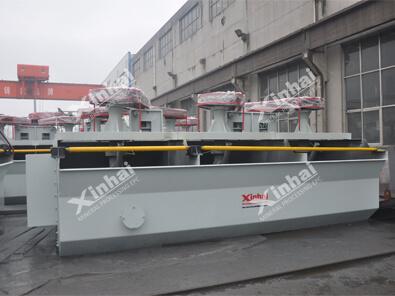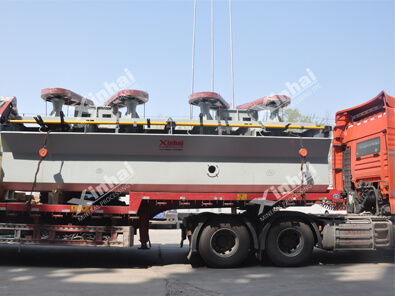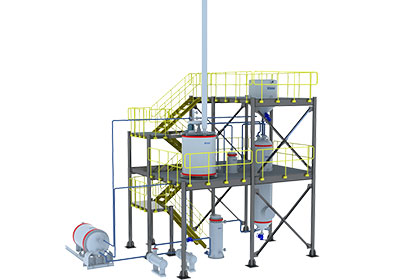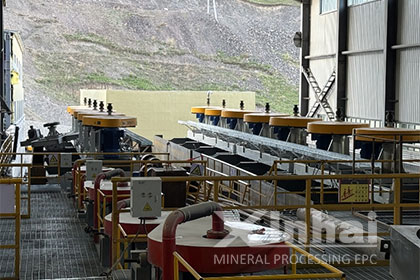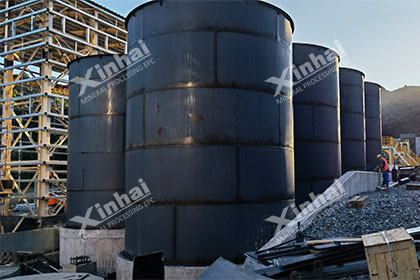The Complete Guide to Copper Ore Processing Solutions and Equipment
 Shirley
Shirley
 Jun 08, 2022
Jun 08, 2022
 4554
4554
If you want to know more details about equipment, solutions, etc, please click the button below for free consultation, or leave your requirements!
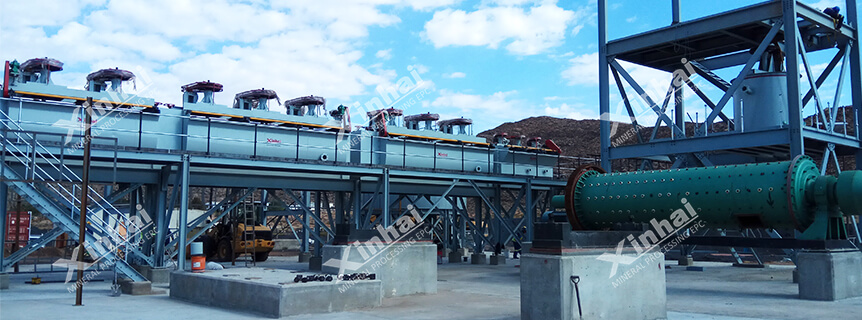
(South Africa copper flotation plant)
Copper ore processing means removing or reducing the harmful impurities and acquiring copper concentrates for smelting or other industrial needs. The main copper processing method is the flotation method. This is a complete guide to copper ore processing solutions and equipment.
01 Copper Ore Type
BackCopper ore mainly includes native copper, copper pyrites, bornite, chalcocite, azurite, covellite, malachite and others. The copper pyrite is the most widely distributed copper mineral and the most important raw mineral material for copper smelting. The copper pyrite is brassily metallic while the power is greenish black.
The copper pyrite with 3.5~4 moh's hardness and 4.1~4.3 specific gravity often exists in many kinds of copper ore deposits in states of dense massive block or disperse granule, easily weathered into malachite and azurite in surface.
02 Copper Ore Processing Solutions
BackThe main copper ore processing method is flotation while other methods include magnetic separation, gravity concentration, etc.
(1) Single Copper Ore Flotation Process
The selection of flotation principle process for single metal ore mainly depends on the disseminated particle property of valuable mineral in ore, most of which is unevenly disseminated. The different hardness of valuable mineral and gangue, and the easy argilization of valuable mineral can influence recovery ratio, so the principle process should make roughing and scavenging for valuable mineral firstly as possible to gain rough concentrate or middling, and then make middling regrinding and reconcentration.
Unevenly disseminated valuable mineral can produce some qualified concentrate after coarse grinding, while after another grinding and concentration, rougher tailings and rough concentrate gained after regrinding and reconcentration of rougher tailings can produce the second qualified concentrate. When processing complicatedly and unevenly disseminated ores, owing to the uneven dissemination of valuable material and the broad dissociation range of interlocking particles, sometimes need adopt 3-phase grinding and 3-phase grading process. When dealing with ores with much native mud and soluble salt, owing to the different separation technology of slurry and ore sand, usually adopt the grading process of slime and sand.
Single metal copper ore mainly includes disseminated copper ore and dense copper ore.
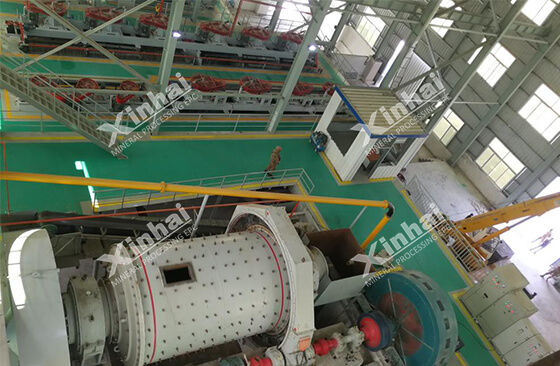
(Pakistan copper flotation project)
Disseminated Copper Ore
Usually adopt relatively simple process with 1-phase grinding after which the fineness of 200 mesh approximately accounts for 50%~ 70%, 1 roughing, 2~3 concentration, and 1~2 scavenging. If the disseminated particle size of copper mineral is relatively small, consider to adopt stage grinding and separation process. Most mineral processing plants for bornite usually adopt stage grinding and separation process of rough concentrate regrinding and concentration, the essence of which is bulk-differential flotation process. After phase 1 coarse grinding, roughing and scavenging, the rough concentrate is grinded and concentrated once more to produce high grade copper concentrate and sulfur concentrate.
The coarse grinding fineness of 200 mesh accounts for 45%~50% while the regrinding fineness of 200 mesh accounts for 90%~95%.
Dense Copper Ore
Owing to the dense symbiosis of copper pyrite and pyrite, the pyrite is usually activated by secondary copper mineral, and the high content of pyrite results in hard inhibition of the activation and hard separation. The copper concentrate and sulfur concentrate is required to be obtained simultaneously in separation. The tailings after copper flotation are usually sulfur concentrate. If the gangue content of ore exceeds 20%-25%, another separation must be made in order to obtain sulfur concentrate. When processing dense copper ore, often adopt 2-phase grinding or stage grinding, and require relatively fine grinding fineness. The agent dosage is also relatively high with more than 100g (ton raw ore) aerial yam and 8~10kg (ton raw ore) lime.
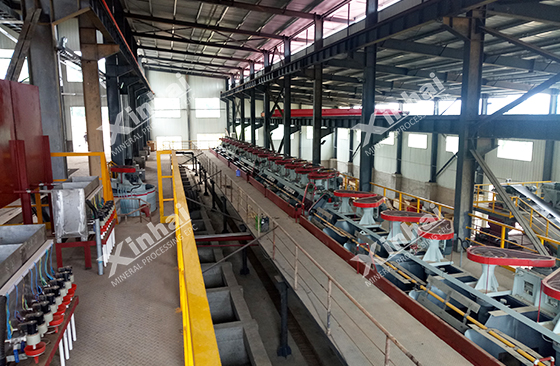
(Laos copper flotation project)
(2) Polymetallic Copper Ore Flotation Process
The polymetallic ore flotation refers to the flotation of more than two valuable minerals. The grading process usually includes differential flotation, first bulk flotation and then separation flotation, and both of the differential flotation and bulk flotation. For example, the flotation of lead zinc ore often adopts the differential flotation of lead and zinc in turn, or bulk flotation of lead and zinc to obtain bulk concentrate, which after another grinding (or not), goes through separating flotation to produce lead concentrate and zinc concentrate.
For another example, the floatation process for polymetallic ore of copper, lead & zinc, iron sulfide usually makes differential floatation for copper and lead to separate them firstly, and then for tailings of copper and lead to make bulk flotation of zinc and sulfur to separate zinc and sulfur or successively make differential flotation for zinc and sulfur to produce zinc concentrate and sulfur concentrate. For some ores, take advantage of mineral floatability to use selective collector to preferentially select dissociated mineral, and then make bulk flotation and separating flotation. Whether using regrinding process or not depends on the mineral dissociation.
(3) Copper Oxide Ore and Compound Copper Ore Processing Method
Flotation Method
According to the difference of technical schemes, the flotation process can be divided into:
(1) Sulfuration Flotation
Add vulcanizing agent to make oxidized ore vulcanized, and then use ordinary prescription of copper sulphide flotation to make flotation. The method in common use is suitable for processing ores which are malachite, azurite and atacamite.
(2) Fatty Acid Flotation
Use fatty acid as collecting agent for floatation, and usually also add sodium carbonate, water glass and phosphate as the inhibitor of gangue and regulator of pulp. The fatty acid and its soaps can well collect malachite and azurite. The test result of using fatty acid with different hydrocarbon chain to make flotation for malachite shows that as long as the hydrocarbon chain is long enough, the collecting capacity of fatty acid for malachite is quite strong, and within a certain range, the stronger collecting capacity is, the less dosage is. The most widely used fatty acid in practice is C10~C20 compounded, saturated or unsaturated carboxylic acid. The process is only suitable for copper oxide ore of which the gangue is not carbonate. When the gangue contains much iron and manganese mineral, its indexes will become bad. Most foreign companies used to adopt this process add sodium sulfide and aerial yam in recent years except a few companies like dinga mineral processing plant in Zaire.
(3) Amine Flotation
Using amine as collecting agent for flotation is suitable for processing malachite, azurite, atacamite and others, and add inhibitor of gangue if slurry is too much; if the ordinary inhibitor fails to work, select seaweed meal, lignin sulfonate or cellulose lignin sulfonate, polyacrylic acid and others as inhibitor of gangue.
(4) Chelating Agent-neutral oil Flotation
Chrysocolla can be recycled by the above-mentioned method, but the effect is relatively bad. So choose special collecting agent such as basic dyestuff malachite green substituted by octyl group, octyl group oxygen fat acid potassium, benzotriazole and neutral oil emulgator, N - instead of the imine iminodiacetic acid salt, condensation compound of polyamine and organic halide, quaternary ammonium salt and season phosphorus salt.
(5) Emulsion Flotation
Firstly vulcanize copper oxide ores and then add copper complexing agent to create stable lipophilic mineral surface, and next cover its surface with neutral oil emulsion to create a floating state of strong hydrophobic to firmly absorb in bubble flotation. Inhibitors of gangue can adopt acrylic polymers and sodium silicate. The copper complexing agent adopts benzotriazole, methylbenzene-acyl-triazole, mercapto- benzoxazole, diphenylguanidine and others. The nonpolar oil floating agent can adopt gasoline, kerosene, diesel and others.
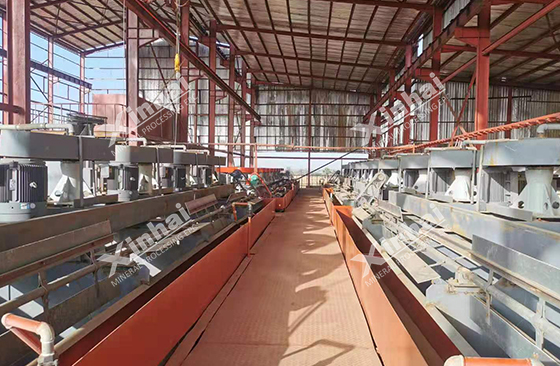
(Nigeria copper flotation project)
Joint Method of Chemical Processing and Flotation
Owing to the bad floatation effect of widely used flotation process for oxidized and mixed minerals, the chemical mineral processing can be used. The chemical mineral processing can be divided into leaching process (including acid leaching and ammonia leaching), leaching-extraction-electrowinning process; leaching-permutation-flotation process (namely LPF process); grinding-leaching-permutation-flotation process (namely GLPF process); Leaching-replacement-magnetic process (namely LCMS process); grinding-leaching-flotation process, harlan method (direct electrolysis method of oxidized copper ore); roasting-leaching-electrolytic process; chloridizing roasting-flotation method; separation-flotation method (chlorination reduction roasting-flotation method); reduction roasting-ammonia leaching process and others.
The flotation of disseminated copper ore usually adopts very simple process with 1 phase grinding after which the fineness of 200 mesh approximately accounts for 50%^ 70%, 1 roughing, 2~3 concentration, and 1~2 scavenging. If the disseminated particle size of copper mineral is relatively small, consider to adopt stage grinding and separation process.
Most mineral processing plants for bornite usually adopt stage grinding and separation process of rough concentrate regrinding and concentration of which the essence is bulk-differential flotation process. After phase 1 coarse grinding, roughing and scavenging, the rough concentrate is grinded and concentrated once more to produce high grade copper concentrate and sulfur concentrate. The coarse grinding fineness of 200 mesh accounts for 45%~50% while the regrinding fineness of 200 mesh accounts for 90%~95%.
For the flotation of disseminated copper ore, owing to the dense symbiosis of copper pyrite and pyrite, the pyrite is usually activated by secondary copper mineral and the high content of pyrite results in hard inhibition of the activation and hard separation. The copper concentrate and sulfur concentrate is required to be obtained simultaneously in separation.
The tailings after copper flotation are usually sulfur concentrate. If the gangue content of ore exceeds 20%-25%, another separation must be made in order to obtain sulfur concentrate. When processing dense copper ore, often adopt 2-phase grinding or stage grinding, and require relatively fine grinding fineness. The agent dosage is also relatively high with more than 100 g (ton raw ore) aerial yam and 8~10kg (ton raw ore) lime.
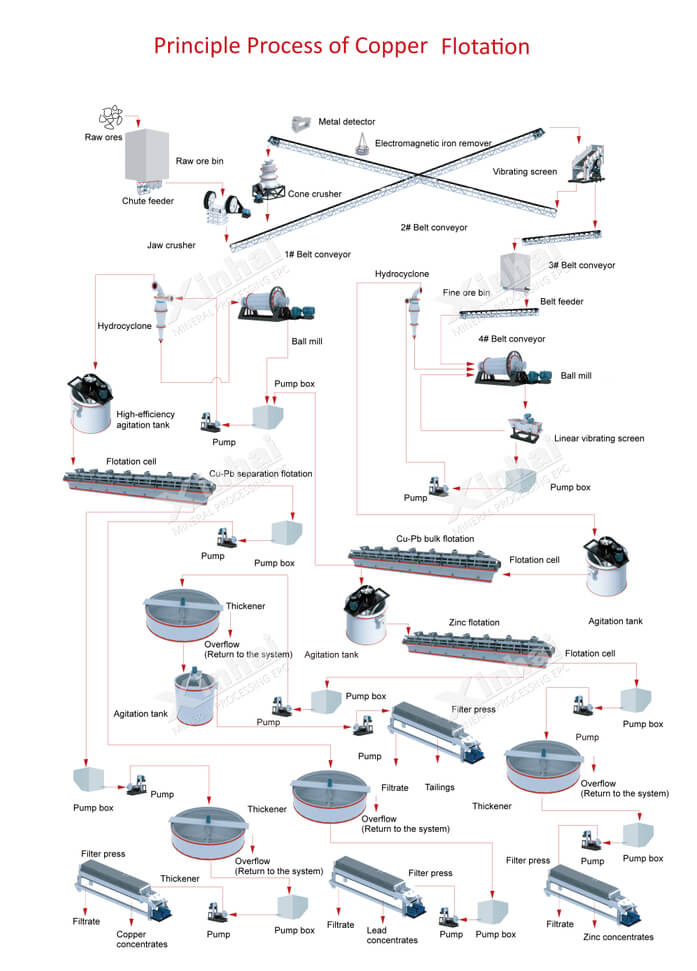
03 Copper Ore Processing Equipment
Back(1) Jaw Crusher
Jaw crusher is widely used in mineral processing, building materials, silicate and chemical industry. In mineral processing industry production, it is commonly used for coarse & intermediate crushing of hard or medium hard ores.
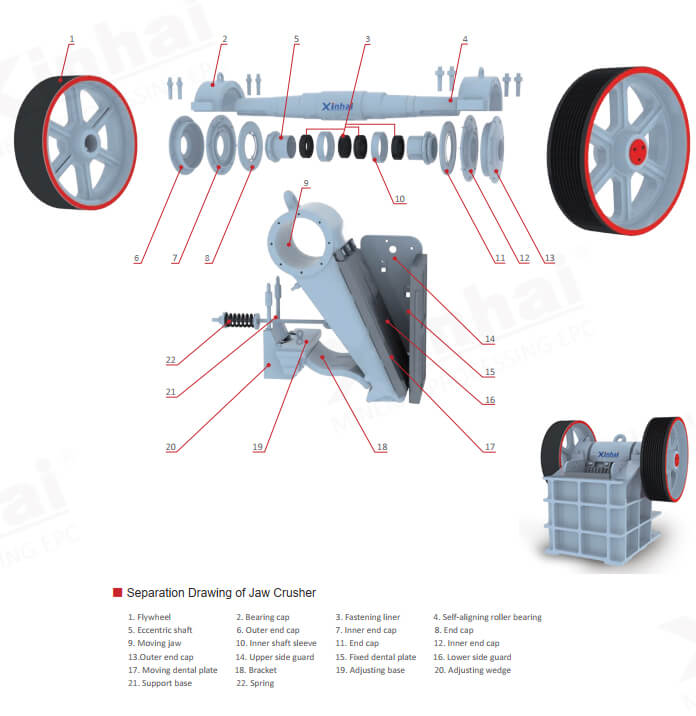
(2) Circular Vibrating Screen
Circular vibrating screen is used for material classification in the industries such as mineral processing, coal dressing, construction materials, electric power and chemical engineering; aplicable for the dewatering, desliming, medium drainage, etc.
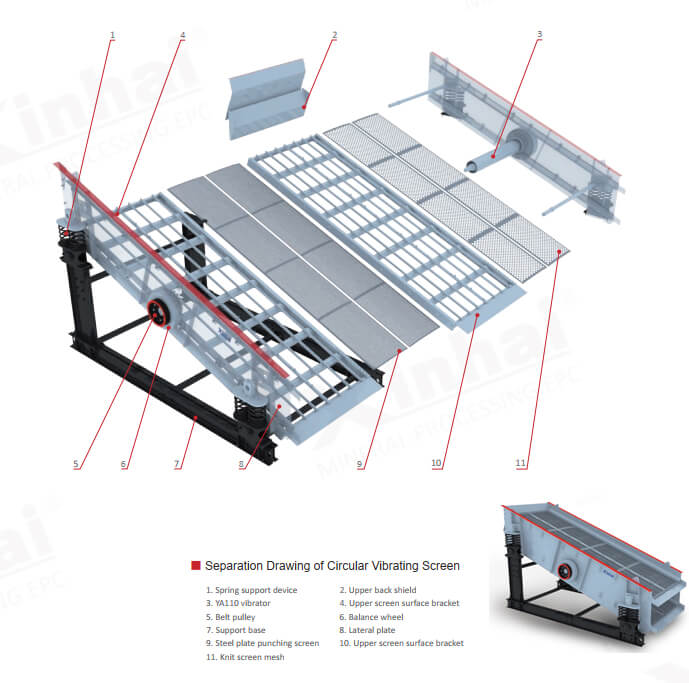
(3) Wet Energy-saving Grid Ball Mill
Wet energy-saving grid ball mill is generally used in grinding ores with large particle size.
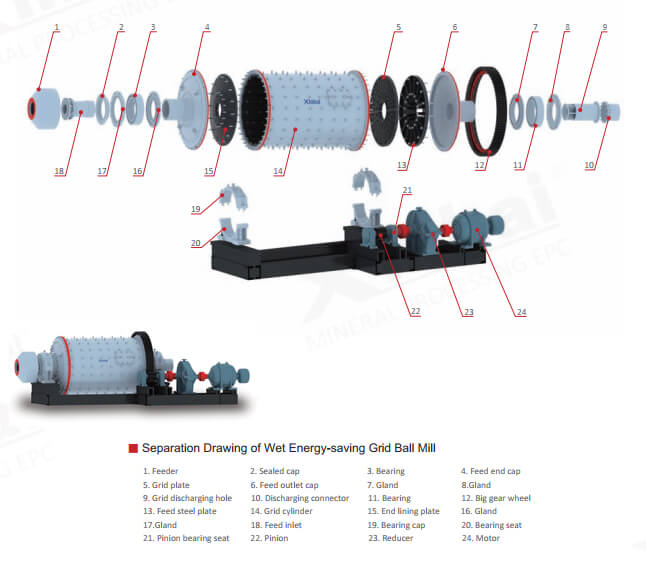
(4) XC II Hydrocyclone
The XC II hydrocyclone developed by Xinhai is suitable for dry tailings stacking. It has the features of unique inlet structure, more reasonable cylindrical section height and cone section angle, further optimized insert depth of overflow pipe, high concentration efficiency and density, underflow density of 75%, small overflow particle size, and obvious effect in dry tailings stacking application.
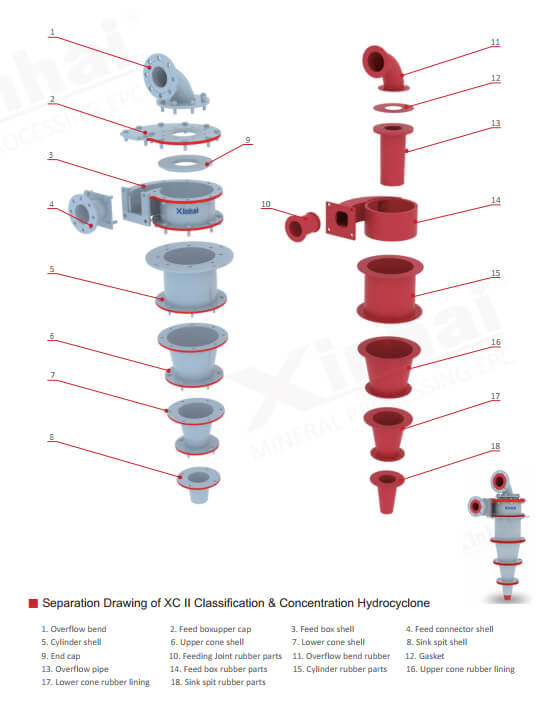
(5) BF Mechanical Agitation Flotation Cell
BF mechanical agitation flotation cell can be widely used in the mineral classifications of non-ferrous metals, black metals, and non-metals. It is suitable for roughing and scavenging in large and medium flotation plant.
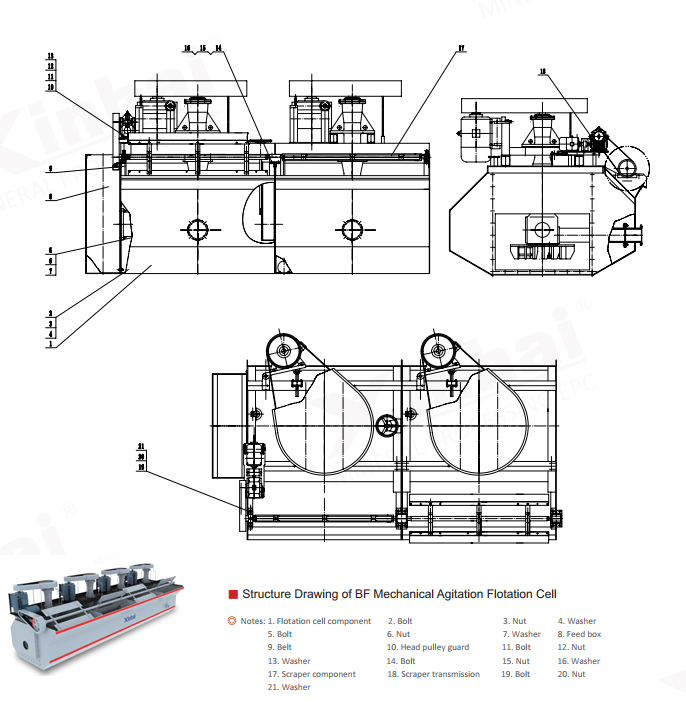
(6) Updated High-efficiency Thickener
Updated high-efficiency thickener can be widely used for the treatment of slime, waste water, and waste residue in metallurgy, mining, coal, chemical industry, building materials, and environmental protection departments.
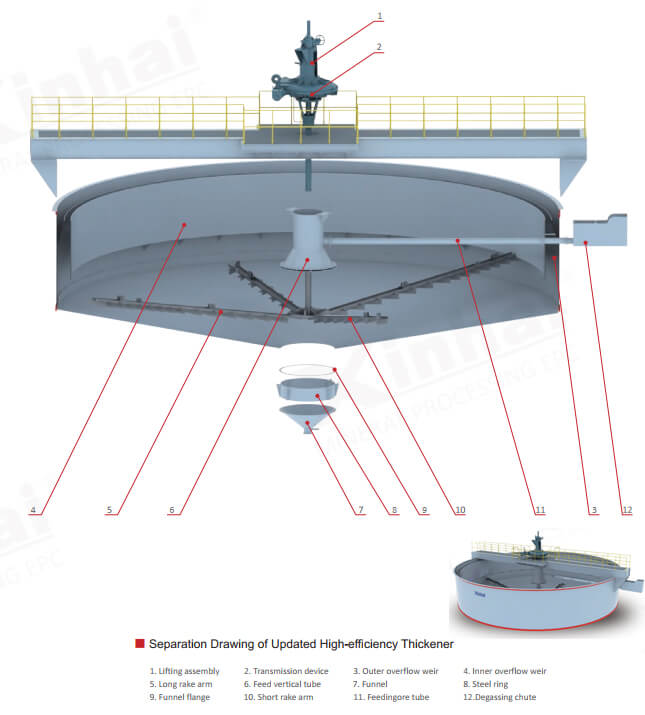
(7) XPA Wear-resistant Rubber Slurry Pump
XPA wear-resistant rubber pump is suitable for handling corrosive slurry or fluid containing solid materials, exceeding the scope of application of metal and other types of pumps.
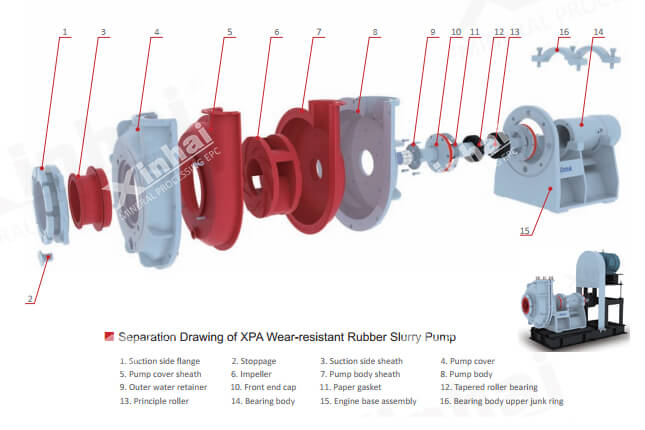
To Wrap Up
The above are the copper ore processing solutions and equipment. If you have other questions or want to customize mineral processing solution and equipment, you can contact our online service or leave your message.
 +86 183 3575 8886
+86 183 3575 8886 pinklaurabao@gmail.com
pinklaurabao@gmail.com




 Message
Message Chat Now
Chat Now


